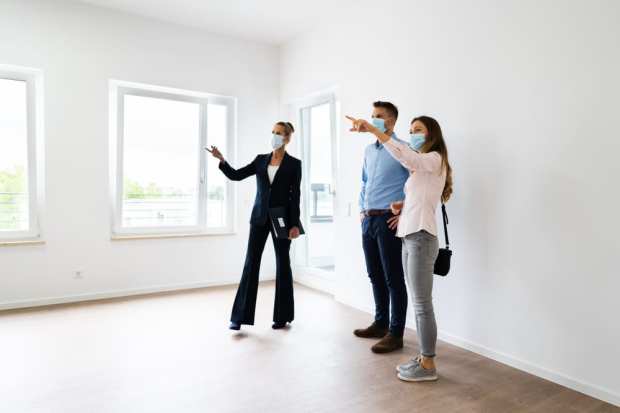Amid Changing Lifestyles, Homebuying To Continue Torrid Pace?

Home buying is up — at a heady pace, for the fourth straight month.
Behind the data lie a slew of lifestyle changes and demographic shifts, which may have positive ripple effects for the SMBs that line Main Street, and bode well for consumer spending trends overall.
To that end, and in terms of the data announced by the National Association of Realtors, existing home sales grew by 9.4 percent in September over August, which equates to a seasonally adjusted, annualized rate of 6.5 million units. Inventory is tight, too, as that metric was down by 19.2 percent, equating to just 1.5 million homes on the market.
As basic economics would predict, tight inventory — the latest tally is only 2.7 months’ worth of inventory — coupled with high demand is leading to price increases. Median prices are up nearly 15 percent year over year to a bit more than $311,000.
Drilling into the data, NAR said that each of the four regions tracked showed month-over-month and year-over-year growth.
The pandemic has also spurred buying of properties tied to vacation destinations, growing 34 percent year over year for locations such as Myrtle Beach and the Jersey Shore.
Those two data points — that the housing demand is widespread, and idyllic settings are drawing interest — give some sense of the shifts that may be taking place behind the numbers. In terms of turnaround, properties were on the market for only 21 days. That means that sales — from listing to closings — have accelerated, as time on the market was 22 days in August and 32 days in September 2019.
NAR said that first-time buyers were 31 percent of the market, down from 33 percent seen in previous readings. This implies that first-time buyers are being priced out of the market. But with a deeper dive into some of the supplemental data tied to existing home sales, nearly 73 percent of sales were for properties that spanned the $100,000 to $500,000 price range, with the $250,000 to $500,000-level properties year over year from 28 percent in the northeast to 55 percent growth in the Midwest.
Low mortgage rates are also spurring sales, of course. And the market is not quite at the level of the dream of homebuying being simply a dream. Demographic shifts are playing a role as realtor.com noted that almost half of millennials, 49%, “pushed up their plans to buy” housing due to the pandemic. A survey revealed that about three-quarters of millennials surveyed are now working remotely.
Though the NAR data is not as granular as to see who is buying homes to, say, work from home, or what amenities are most in demand, the huge gains in sales in the Midwest seem to imply that at least some sense of open space is desired. As reported by The New York Times late in the summer — and pointing to demand in the northeast — home sales in New York City’s suburbs, including New Jersey, Westchester County, Connecticut and Long Island, have been well on the rise. Home sales in that region were up more than 40 percent.
The general data from NAR also hint at a willingness to spend that is a positive read across other sectors of the economy (such as Main Street SMBs) — after all, buying a home is among the most expensive transactions any individual or family will make.
But there’s been no paucity of demand, even through months of rough hiring data. The fact that, in recent surveys, main street SMBs have said they are in better financial shape than had been seen earlier in the pandemic implies that the consumers’ migrations toward new places to live is giving a boost to businesses that dot those towns and MSAs.
The Role of Technology
Technology may play a role, too, in feeding home-buying activity. As noted in this space earlier in the week, there is some indication that inventory pressures may abate a bit. This week a survey of builder confidence gained ground, surging for the second consecutive month. The latest reading of sentiment reached a record high of 85 in October, according to the National Association of Home Builders (NAHB/Wells Fargo) Housing Market Index (HMI). The index reached 83 in September, the first time it was higher than 80.
The friction in the housing market — where buyers want to buy, but supply is limited — may accelerate a pivot to online platforms to match the two sides of the transaction. In one example of such platform traction, HomeLight CEO Drew Uher told Karen Webster that platforms can make the home buying process smoother, more certain and more seamless for all stakeholders, encompassing listing agreements to purchase offers. Elsewhere, in other PYMNTS coverage, Prevu seeks to shift the process to the buyer, and brings the agent into the process much later on than has been seen traditionally. The Prevu platform itself digitally acquires the customers (who get cash back on the purchase), as Prevu Co-Founder Thomas Kutzman told Karen Webster in a separate interview.
The latest data — representing the fourth consecutive month of heated home buying increases — show that amid the pandemic, the search for new (perhaps safer) vistas shows no sign of stopping.